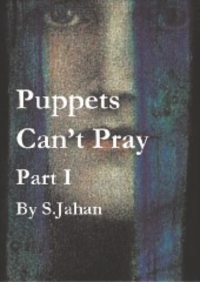| Home - Back Issues - The Team - Contact Us |
 |
| Volume 11 |Issue 20| May 18, 2012 | |
|
|
Book Review Uncomfortable Home Truths Zarin Rafiuddin
Puppet's Can't Pray Part 1 is the first volume of a new novel by first time Bangladeshi-British author Shah Jahan. It follows the life of protagonist Shah and his family as they negotiate their relationships with each other and other people around them in the Bangladeshi community in England where they live. The novel does not describe the idyllic life of a family, but rather reflects a torrid nightmare of escapism, psychological scarring, social anxiety, totalitarian-patriarchy in the form of parenthood, social degradation and loss of both individual and socio-communal value. Shah, with his complexities, is an angst-driven, depressed, lonesome and scathed young man. With no seemingly good promises for a future, he finds his part time job a kind of slavery and his own home a sort of pathetic refuge from the world at large. He is a recluse and possesses no connections. This is apparent not only within in his family but also in his community. Yet, why is Shah an outcast? It is specifically stated that Shah had all types of academic achievements; his failures seem so unexpected. However, this is what has happened — Shah is agoraphobic, disgusted with his menial job. He detests his existence for, despite his education, he could not last at a law firm. The reason for his failure is his father. The patriarchal tyrant, referred to as Abu, is a dictator who wants to swallow up and control everyone. He is verbally and physically abusive; prone to grandiloquence and delusional fancy, he thinks that he is some kind of deity to be loved and adored by his “followers” and this includes not only his direct family but some people outside of it too, especially Ricky, Shah’s slaving yet scheming older cousin. Abu loves thinking he is religious and pious; that he knows Islam and that he can do whatever he wishes to do with his kin. That is why Shah seems resistant towards religion; his father uses it as a tool for subjugation and instructs it accordingly to his own fancy. The knowledge and execution of religion, as is made apparent to the reader, is marred by the tyrant. By trapping his family in his schemes for greed and fame, Abu has destroyed them. They are very well-educated; yet they are socially awkward and cannot reach out to any community. Their lives of oppression continue until a certain Eid-ul-Adha day when Abu, forcing Amu, decides to take some new decisions to “improve” the family, and this sets most of the plot in motion. Shah Jahan's novel depicts the lives of a Bangladeshi family that can't fit in and a community that categorically excludes them. It shows how being a second-class citizen in a country can also hinder you from making the connections needed for success. Shah, the main protagonist, believes in freedom and equality, but finds them nowhere at home or outside. His brother, and the only other son, Khan, has deeper psychological and physiological scarring and so has become a hermit, an eccentric. Shah's sister, Molly, the eldest daughter, seems to be the only real wage-earner of the family, as the family's takeaway business is always failing. She and her family are stuck in a dead-end job. The other sisters, young and miserable, hate their father with a vengeance and have pity for their Amu who goes on doing nothing but following orders mechanically. The novel's strong points come from the absurdety of the tyrant which is perfectly portrayed in a lovely language. It brilliantly describes Shah's understanding of scrutiny, Khan's eccentricities and meekness, Amu's social crucifixion, the scrutinising eyes of the community, their talks and condemnations which make up most of everyone's social identity. However, the psychological, religious and cultural depictions could be more analytical and less reductive. Also, the novel can do with more interactive angles from its characters instead of descriptions alone. With Part 2 of the novel, the plot will continue and hopefully bring with it more psychological, cultural and religious insight and the multidim-ensionality of the different players. The e-book is a available on Amazon.
Copyright
(R) thedailystar.net 2012 |
